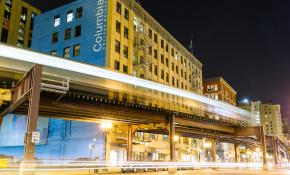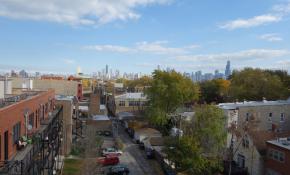Kristen Hare: Hi, Ren. We have a lot to talk about this week.
Ren LaForme: Let’s go over the past week and talk about all that happened and where we are going from here.
So, last week in this conversation we shared a couple of tools to help news organizations find free images to use with their stories. Photographers and others took issue with some of the tools we presented and the way we talked about them. We ran rebuttals from Mark E. Johnson, an educator and visual journalist who has worked with Poynter for many years; Sue Morrow, a longtime photo editor; and the National Press Photographers Association.
And in conversations we had internally and with others, we realized that this is part of a conversation that Poynter and a lot of the industry really need to have.
Hare: You and I have been talking about a number of stories we plan to cover, but we wanted to use this week’s post as a way of inviting other ideas, too. So far on our list: How we and other newsrooms need to create new photo policies; a guide for working with freelance photojournalists; a look at newsrooms of different sizes, their photo staffs and how they’re dealing with disruption; innovation in photojournalism (that’s broad, but we think there are some cool projects that we’re missing). What am I forgetting?
LaForme: I think we’d also like to get into how to make sure we’re giving proper treatment to visuals when websites and social sites demand them for everything, when and why to use photographs versus illustrations and also speak to a designer, perhaps in online and print, about some of their visual pressures and how they’ve been changing.
Hare: I think I have the right way to set the table for this, and that’s by doing something pretty obvious that we didn’t do last week – including a photojournalist. On Tuesday, I spent the day at the Milwaukee Journal Sentinel for a story. I hadn’t planned this, but I walked by the photo department, cringed, considered hiding, and then asked the managing editor if any of them would be willing to talk with me.
Berford Gammon, the director of photography there, was gracious enough to do so. He’s been at the Journal Sentinel for 12 years, “which is brand new by Journal Sentinel standards,” he told me. He started his career in 1991 and has also worked at the Columbus Dispatch and the Philadelphia Inquirer.
Here’s our conversation, which has been edited for length and clarity:
Hare: You started your career in 1991. A lot has changed in newsrooms since then. Tell me about some of the changes that you’ve seen as a photojournalist.
Gammon: It’s just been a period of constant change. We were still shooting film. We were making prints at that point, and that gradually gave way to digital. Another thing is the size of the staffs just dwindled. It’s kind of amazing.
Other things — the amount of time that you had to cover an assignment, the number of assignments in a day, those have all changed. Strangely enough, all these things are happening, and all of the sudden you need more photos …
Hare: Than ever before. Yeah.
Gammon: There’s a hunger for photography. A lot of it is very generic…. A lot of what’s out there right now, it’s very generic items that aren’t really content. They’re just decoration.
Everybody got into this business to tell stories. And we tell visual stories. And at times, I don’t know if that is as respected as it used to be. Everybody got into this business, oh I’m going to be a documentary photography and I’m going to do this and I’m going to do this. And over time, you just don’t get to do those in-depth stories like you used to.
We do a lot of very in-depth project work here. It’s kind of what we’re known for. And it’s just an incredible workload. We put so much into our projects.
Hare: What I’ve heard today is that your CMS is like mine, in that you have to have a photo for everything that’s published. Can you help me, and anyone else who has to deal with that issue, start to think more about how we think through that? It stinks when there’s a technology-inflicted decision that doesn’t fit the work. I guess we could all take on our CMS overlords. Maybe that is a thing that needs to happen. How do you deal with that? How do you get a photo for every story?
Gammon: They come from a number of places. For instance, we have a lot of stories on the University of Wisconsin. So a couple times a year, a photographer who’s already shooting something at UW photographs everything on campus.
Hare: Build archives.
Gammon: Yes. Photograph everything. Banners. The stadium, to give you a pool of images. Everybody does a lot of police and fire stories. You need to have someone photograph police cruisers. You start building up that archive for yourself. They still are generic, but at least they’re specific to what you’re covering.
Hare: You know where they came from. You know that you paid for them. It sounds like the answer is, more places have to think big picture as well as immediate. How else do you do it? I’ve spoken with a few people here today who take their own photos.
Gammon: Yes. And that is not the best solution. We have an incredibly talented staff of people here. I wouldn’t trade them for anything. And they’re willing to do pretty much anything we need to get the job done. But occasionally it’s a problem when reporters go out and get their own photos. You see the budget line and you read the story. Oh my God, I would have loved to have shot that. And they’re like, “Oh well, you guys are always busy, so I didn’t ask you.” And we’re like, “Ohhhh! This, we would have made happen.” It’s OK to come over and ask me. If I say no, you’ll still leave with human dignity. I’m not going to embarrass you.
But there are so many things that we don’t get the chance to photograph because people think we’re too busy. I encourage people to keep asking, “Hey, can you guys do this?” Some of the things we have coming down the line, we want to have part of it. And you can use your phone to do a portrait of someone by the window in their office. We’re not always getting to pick because of that mentality.
Hare: It sounds like the second part of this is “Keep talking to us. Don’t assume we’re going to say no.”
Gammon: If taking a portrait of someone is something you haven’t done that often, and everyone in photo has done this, we’re going to offer suggestions on things that might make a better photo.
Hare: There are newsrooms that either have one photojournalist, or maybe none at all. They might not be legacy newsrooms. They might be startups. But if you’re in a situation where you don’t have those professionals in the newsroom to work with, what then? How do you make decisions about photos? How do you think through how to have a smart and responsible photo policy?
Gammon: I think the most important thing is if you don’t have a photo person because of your budget, don’t make decisions that might end up costing you more money. No matter how many times you tell somebody, you can’t just lift a photo from a website, these things happen all the time, and then you end up paying money.
If there’s something specific, you need to hire someone to shoot it, or you need to contact someone that’s already shot it, and beg. I beg other newspapers every week. I’ll call and say, “Oh, I’m calling to beg. You guys have this great photo of this person, and I’m wondering if you’ll share this with us.” And most people are like, “You know what, print people have to stick together. You bet. What’s your email?” It’s so much better to do something like that than to lift something.
Hare: Are stock photos taboo, or not? Does it depend on the company? Is it something newsrooms can use, or is this like the Wikipedia of research? Don’t go there.
Gammon: There is a need for that type of photography. But you can’t rely on it solely. So I think you need to weigh what’s important. The other side of that is, you’d be amazed how many people will send you photos. If you look up a phone number on a website, it’s more than likely that someone will send you a photo that day.
Hare: So don’t be lazy.
Gammon: Right. You do have to make the phone call.
Hare: What else should we be looking into?
Gammon: Photography is important. Everybody would agree, yes, photography’s important. It’s also important to have visual journalists. Photographers have the coolest jobs. We get to go out and see things that other people can’t see. It’s not that they can’t see it. We get paid to go out and see it in a cooler way than you see it. That’s an awesome job. And it’s an awesome responsibility. I think so many places are investing in people who write at this point. I think you need to take visuals just as seriously.
It’s content. We can do a lot more than just decorate the top of stories.
—
Hare: On Wednesday, Berford emailed me. He had a lot of thoughts since we spoke, but this one was the most important, he said. “As photojournalists, we are the proof that something has happened. Why would you trust the reputation of your publication to such an unknown commodity? I think it is important to know that everyone is working under the same ethical guidelines.”
Thanks, Berford, for talking with me, and thanks for helping us talk about this. Last week, Mark Johnson suggested in his piece that Poynter make this webinar from last year free, and now it is. It’s called “Images on a Deadline.”
LaForme: It’s a good webinar. I’m in it. It tackles a lot of the things that Berford Gammon touched on in your conversation and offers some ways to get away from stock photography. I’m glad we can share it for free this time.









